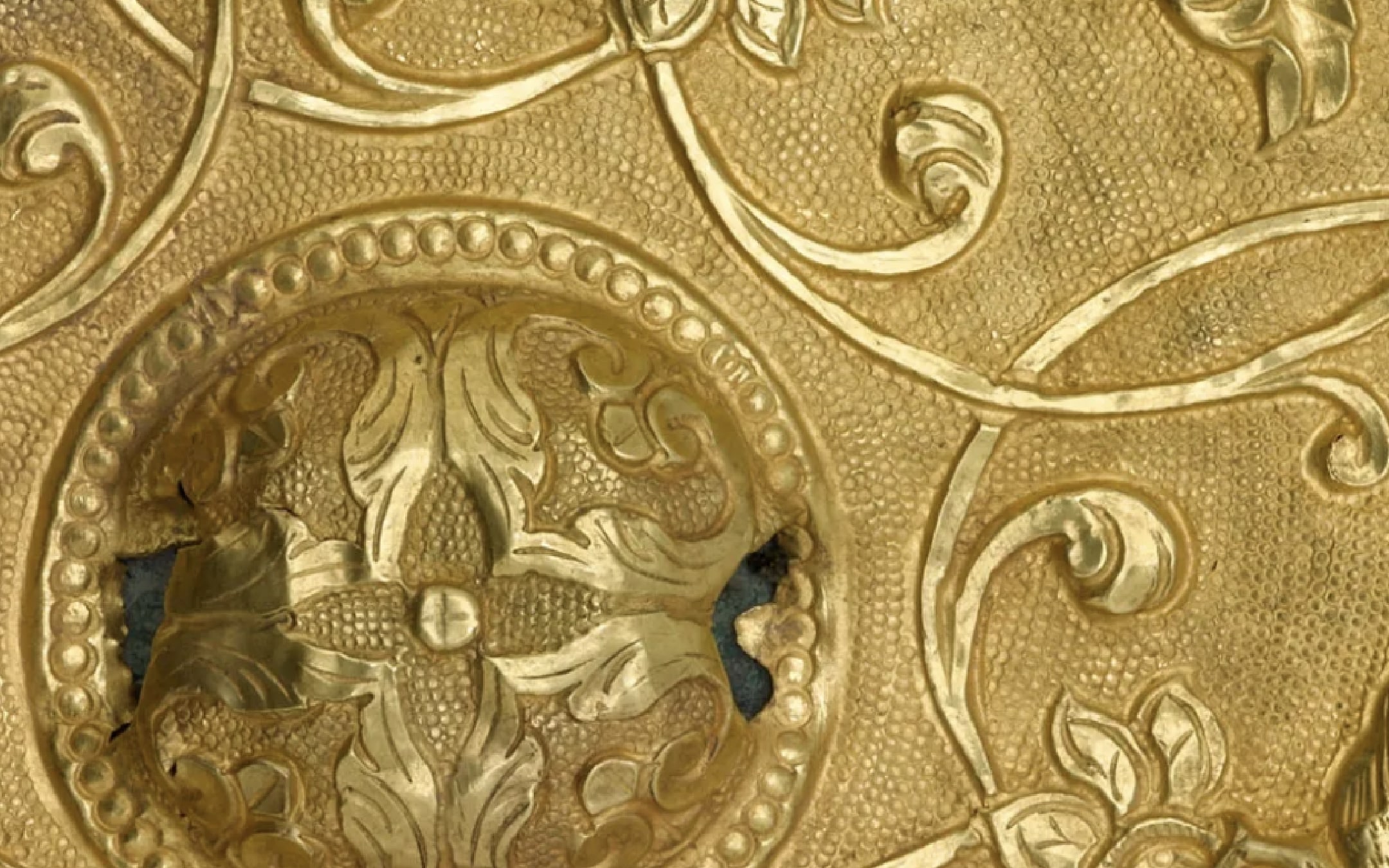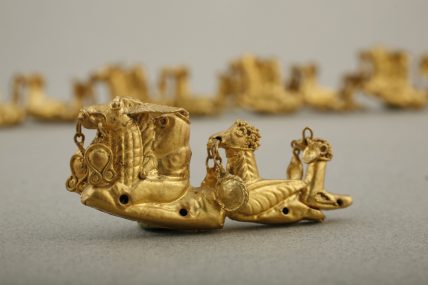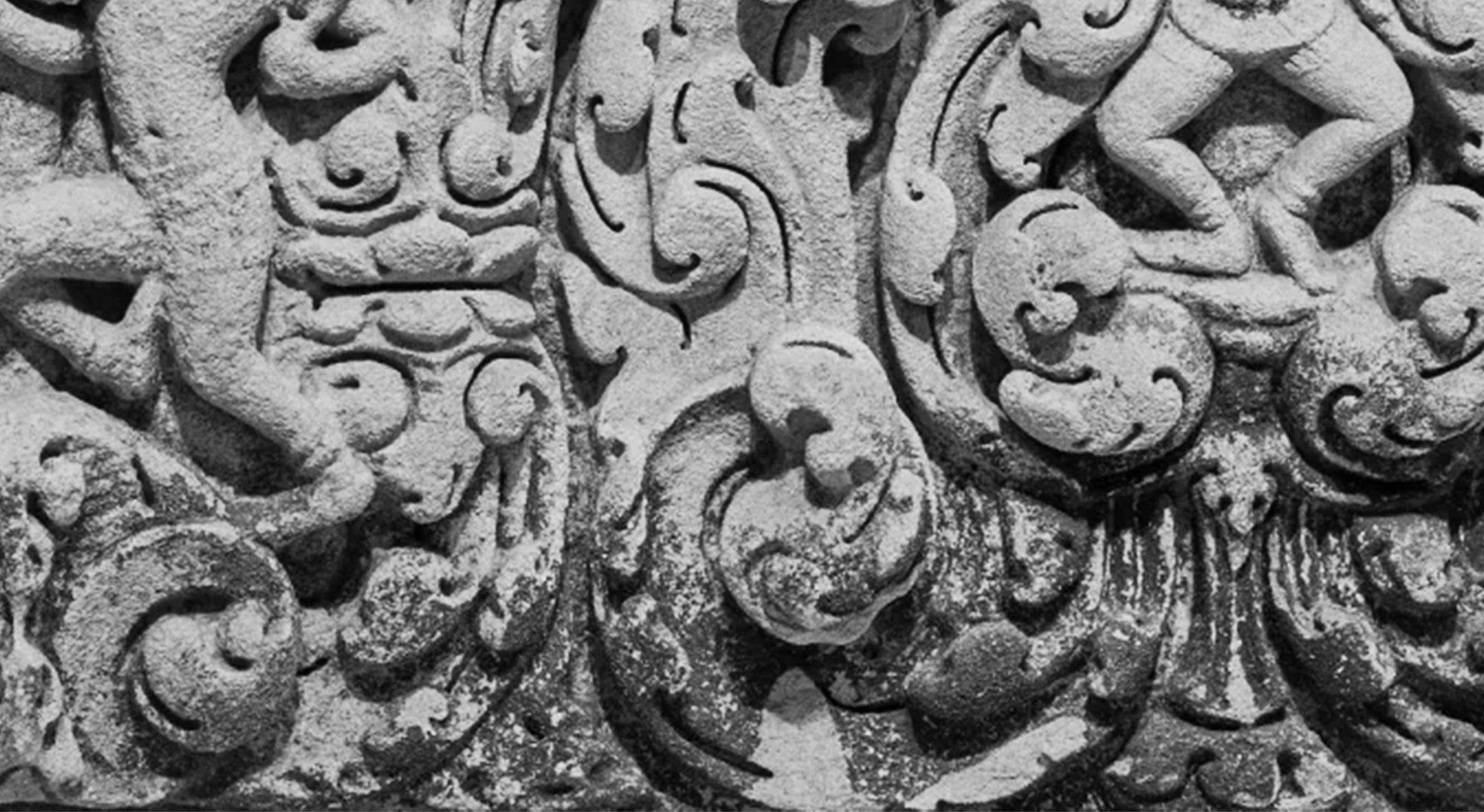December 1, 2007–February 24, 2008
-
Dates
-
Location
Arthur M. Sackler Gallery
-
Collection Area
Ancient Near Eastern Art
The story of Jason and the Golden Fleece is one of the most enduring of ancient Greek myths. According to legend, Jason and his shipmates, the Argonauts, set sail on a perilous journey from Greece to Colchis (modern-day Georgia), then located beyond the known world. His successful quest for the Golden Fleece, which hung in a sacred grove guarded by a dragon, came to symbolize bravery, strength and determination and rightful kingship.
Less well known today, however, is the archaeology and artifacts of Colchis, with its intermingling of Greek and Persian motifs with local styles and traditions. Metalworking, whether in gold, silver, iron or bronze, was a traditional focus of Colchian art and craftsmanship. Another mainstay of Georgian life throughout several millennia has been the production of wine—the earliest evidence of wine and winemaking comes from the area.
“Wine, Worship and Sacrifice: The Golden Graves of Ancient Vani,” on view Dec. 1 through Feb. 24, 2008 at the Arthur M. Sackler Gallery, presents spectacular gold, silver, ceramic vessels, jewelry, Greek bronze sculpture, Greek and Colchian coins, and Greek glassware. Together these objects provide a rich and informative view of the ancient land of Colchis and its principal sanctuary city, Vani, a town in the Imereti region of western Georgia.
Introduction
According to legend, Jason and his shipmates, the Argonauts, set sail on a perilous journey from Greece to Colchis (modern-day Georgia), then located beyond the known world. Less well known today, however, is the archaeology and artifacts of Colchis, with its intermingling of Greek and Persian motifs with local styles and traditions. Metalworking, whether in gold, silver, iron or bronze, was a traditional focus of Colchian art and craftsmanship. The earliest evidence of wine and winemaking comes from the area—another mainstay of Georgian life throughout several millennia.
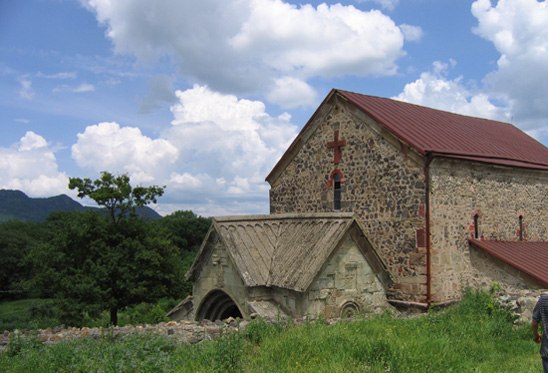
View of the Dmanisi Sioni basilica. Dmanisi is a townlet located in Kvemo Kartli region of Georgia approximately 93 km southwest of the nation’s capital Tbilisi in the river valley of Mashavera.
Image 1 of 7
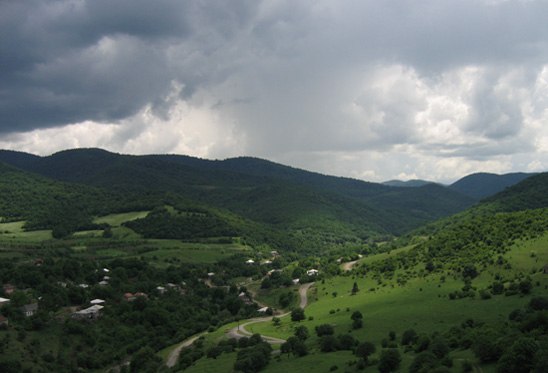
General view of area around Dmanisi. Archaelogical studies in the area have unearthed a rich collection of ancient and medieval artifacts, including the remains of hominids dating back 1.8 million years-twice as old as the earliest hominid found to date in other parts of Europe.
Image 2 of 7
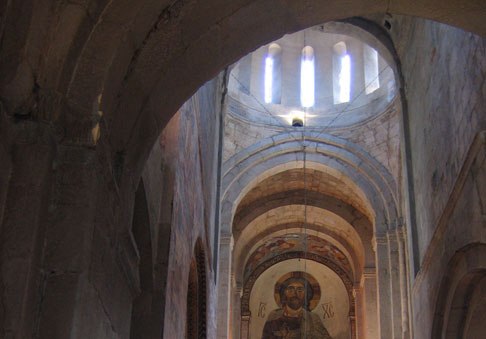
Inside the Svetitskhoveli Cathedral in Mtskheta.
Image 3 of 7
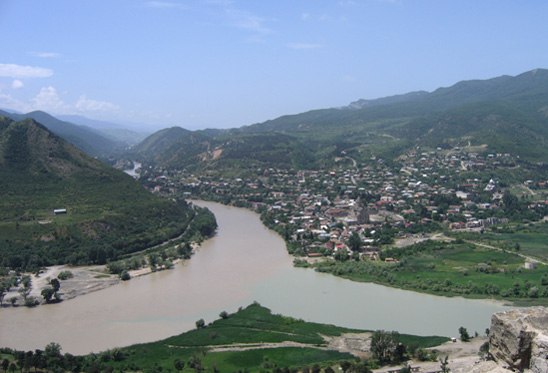
View from the Jvari monastery, which dates back to the 6th century, overlooking Mtskheta, the Aragvi and Kura (Mtkvari) rivers.
Image 4 of 7
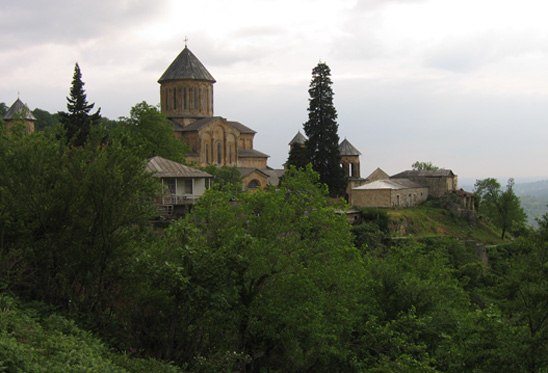
Kutaisi was once the capitol of the ancient kingdom of Colchis. The Gelati Monastery complex, seen here, was founded in 1106 by King David the builder.
Image 5 of 7
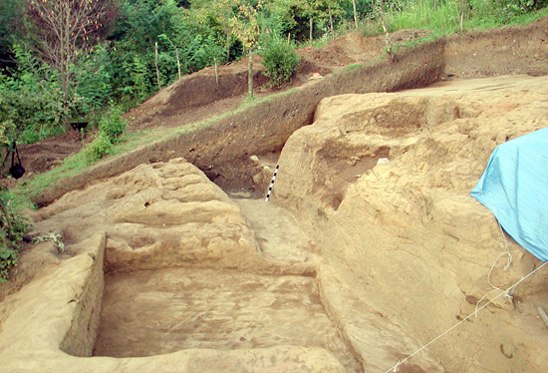
Vani excavation site: Grave 22 was found at Vani in the summer of 2003. In the foreground of the photograph is Grave 22, completely excavated. Just behind is Grave 24, in the early stages of excavation. Also visible along the right hand side of the pits is a later channel which damaged Grave 22. Courtesy of the Georgian National Museum.
Image 6 of 7
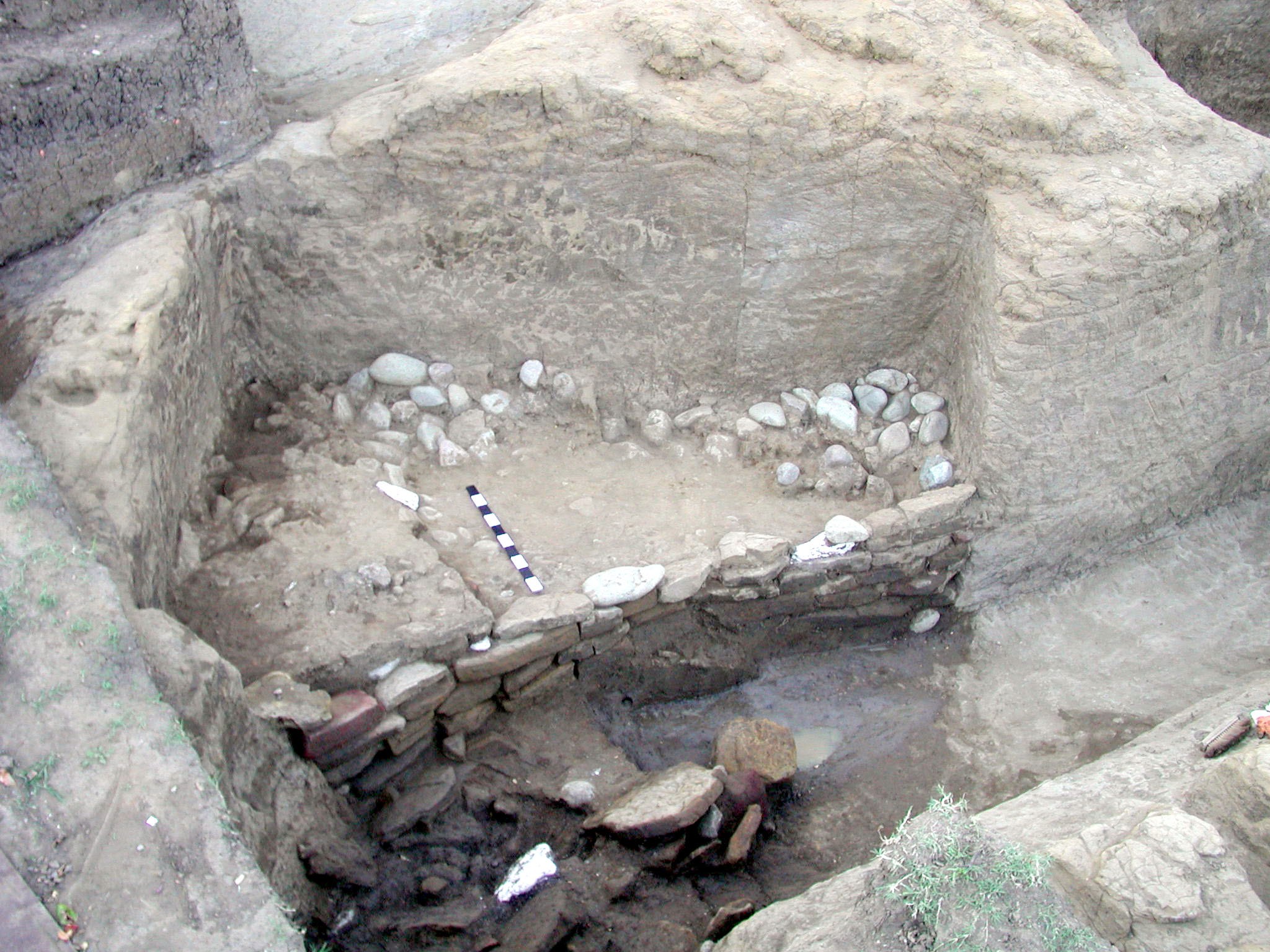
Vani excavation site: Grave 24. The extraordinarily rich Grave 24 was discovered two meters from Grave 22. As the earth and rocks were carefully moved away, a remarkable assemblage emerged, despite the fact that like Grave 22, the tomb had been damaged when a later channel was built. In the photograph you can see Grave 24 and just in front, the channel, with part of the channel wall visible just in front of the tomb. Courtesy of the Georgian National Museum.
Image 7 of 7
Exhibition Highlights
“Wine, Worship and Sacrifice: The Golden Graves of Ancient Vani,” on view Dec. 1 through Feb. 24, 2008 at the Arthur M. Sackler Gallery, presents spectacular gold, silver, ceramic vessels, jewelry, Greek bronze sculpture, Greek and Colchian coins, and Greek glassware. Together these objects provide a rich and informative view of the ancient land of Colchis and its principal sanctuary city, Vani, a town in the Imereti region of western Georgia.
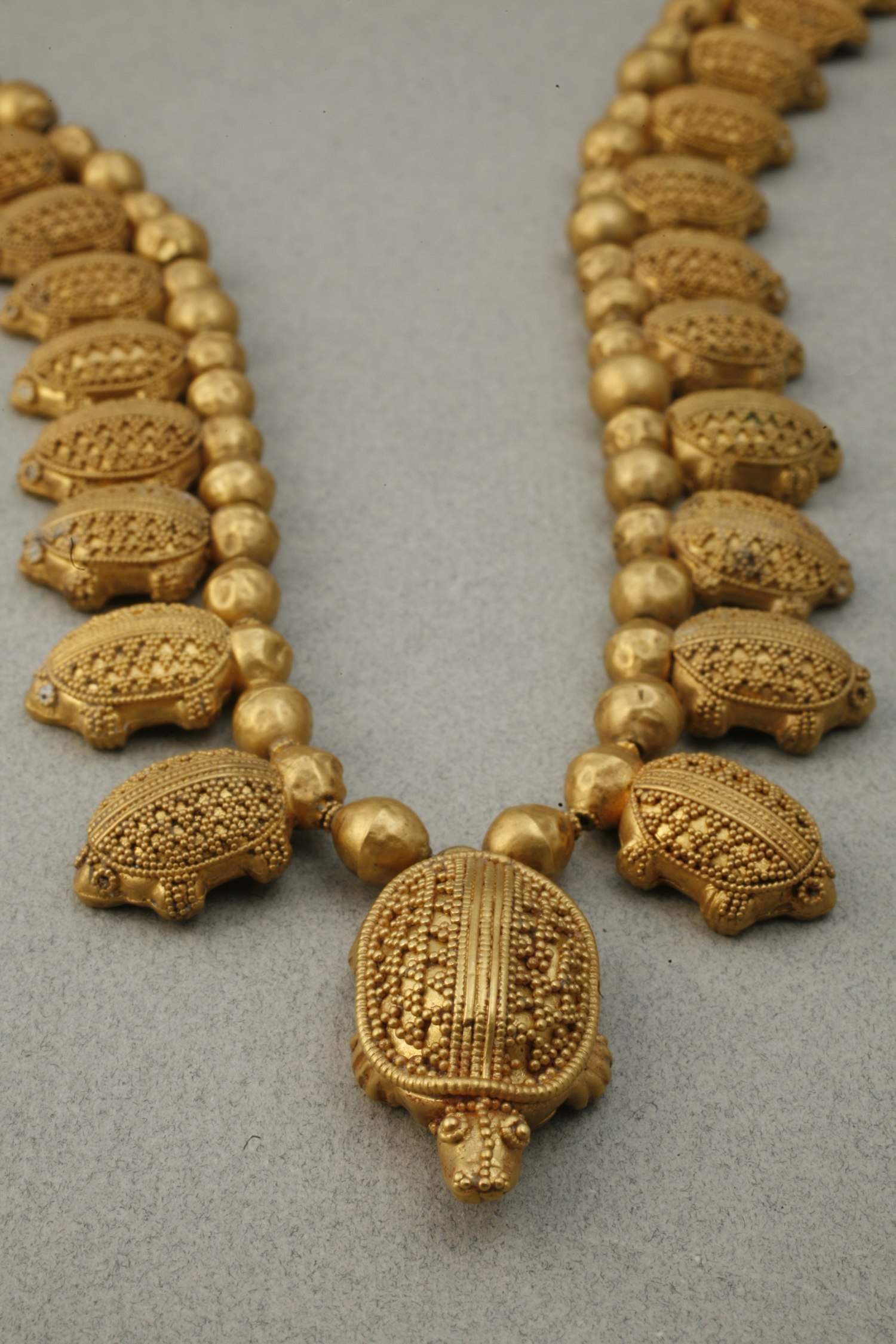
Necklace
Vani, 5th century BCE
Gold, weight: 85.905 g
Tbilisi, Georgian National Museum, 10-975:56
Thirty-one pendants in the form of charming turtles make up this necklace. The eyes of the thirty small ones were done with glass inlay, while those of the large one are of gold. The carapaces are decorated with granulation. (Tomb 11)
Courtesy of the Georgian National Museum.
Image 1 of 9
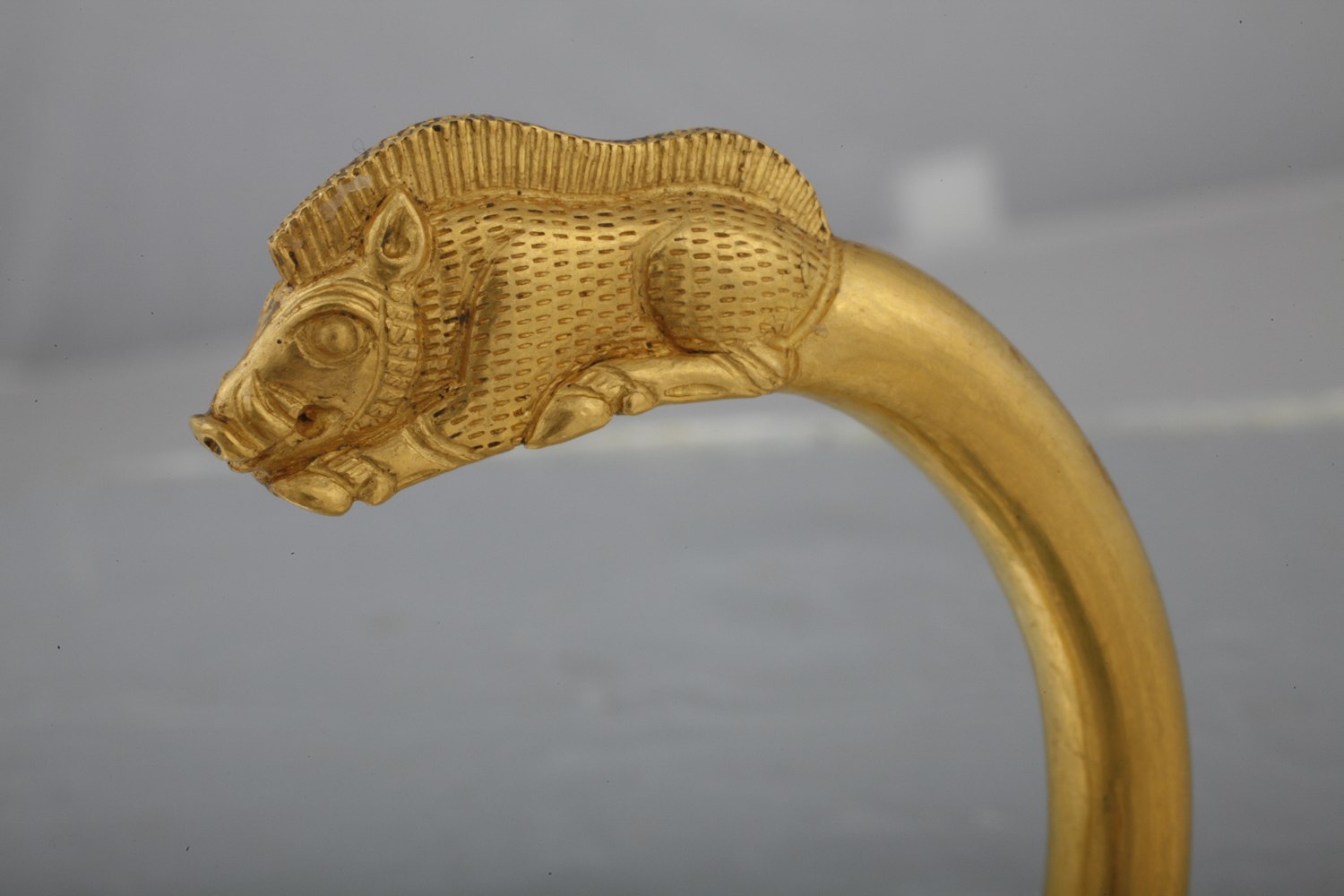
Bracelets
Iran (?), 5th century BCE
Gold, weight: 113.110 g, 113.810 g
Tbilisi, Georgian National Museum, 10-975:61a-b
Boars were commonly hunted in ancient times. Careful attention was paid to the hair and bristles of the recumbent boars that serve as the terminals of these gold bracelets. (Tomb 11)
Courtesy of the Georgian National Museum.
Image 2 of 9
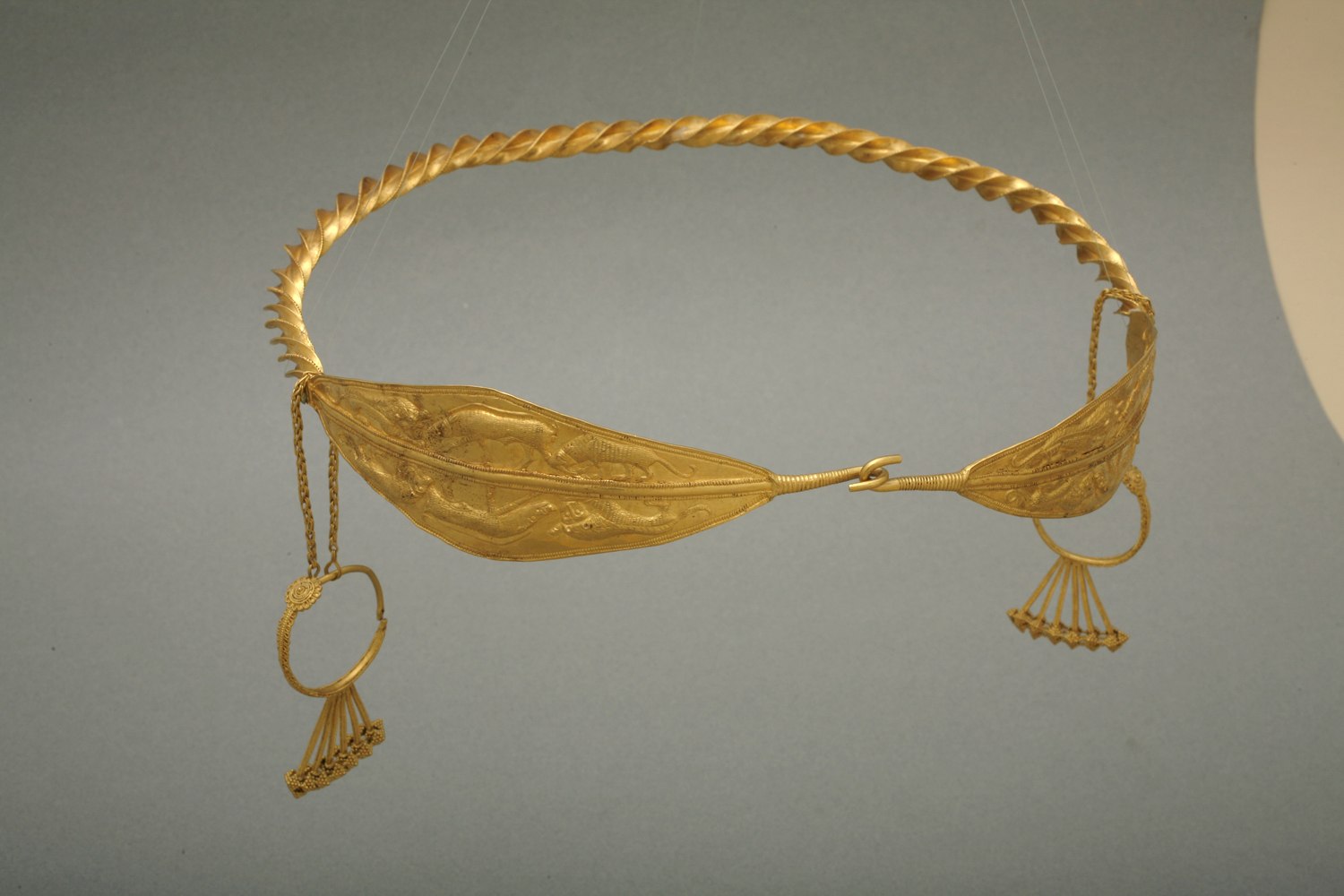
Diadem
Vani, 5th–4th century BCE
Gold, weight: 221.926 g
Tbilisi, Georgian National Museum, 11-974:1
This sumptuous diadem is decorated with repoussé panels of lions attacking wild boar. Its large size suggests that it was worn over a headdress, perhaps one made of cloth. (Tomb 6)
Courtesy of the Georgian National Museum.
Image 3 of 9
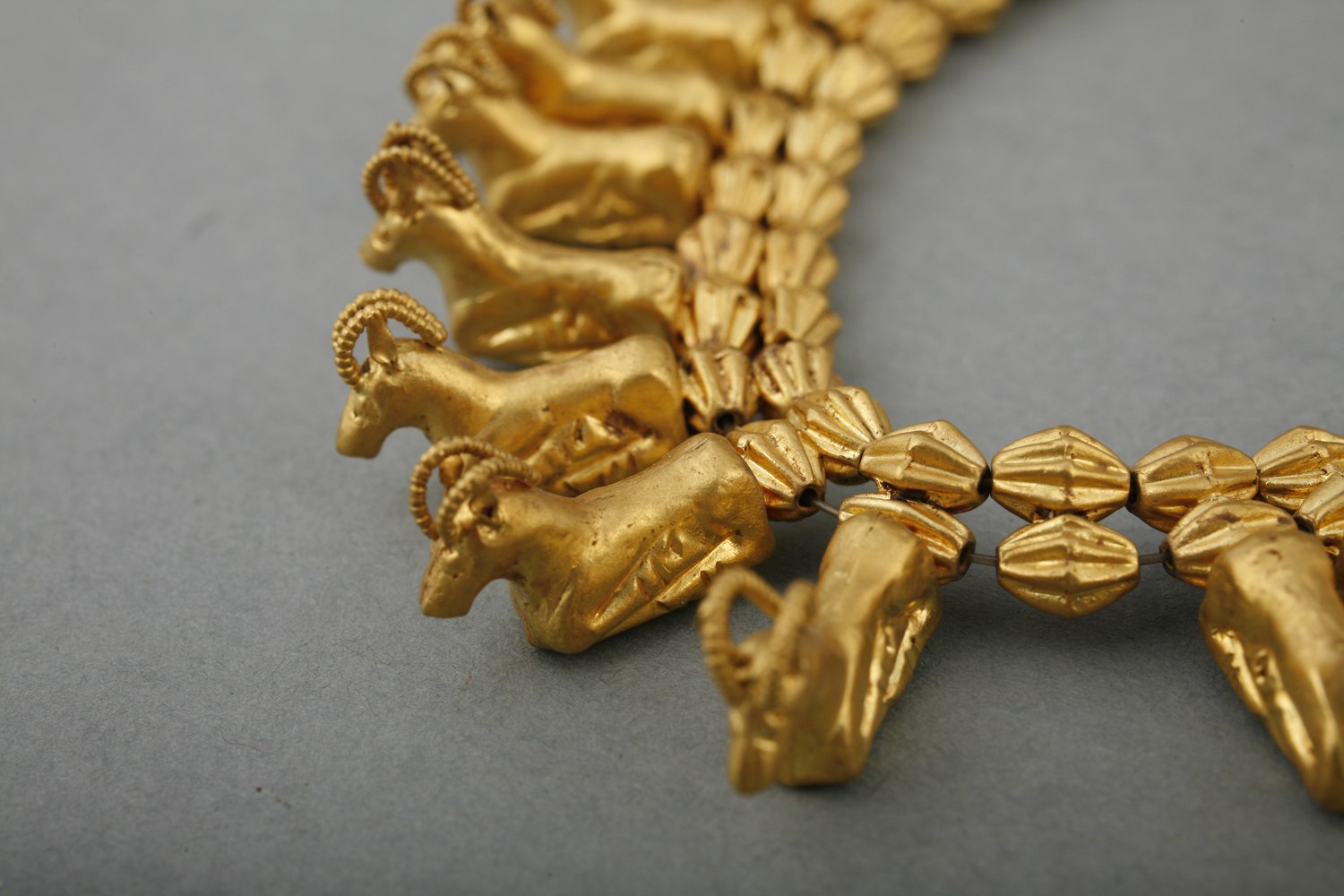
Necklace
Vani, 5th–4th century BCE
Gold, weight: 88.968 g
Tbilisi, Georgian National Museum, 11-974:8
Forming this necklace are 56 crouching gazelles and 13 ribbed spacer beads. The animals were stamped in two halves and soldered together. Ears and horns were added separately. (Tomb 6)
Courtesy of the Georgian National Museum.
Image 4 of 9
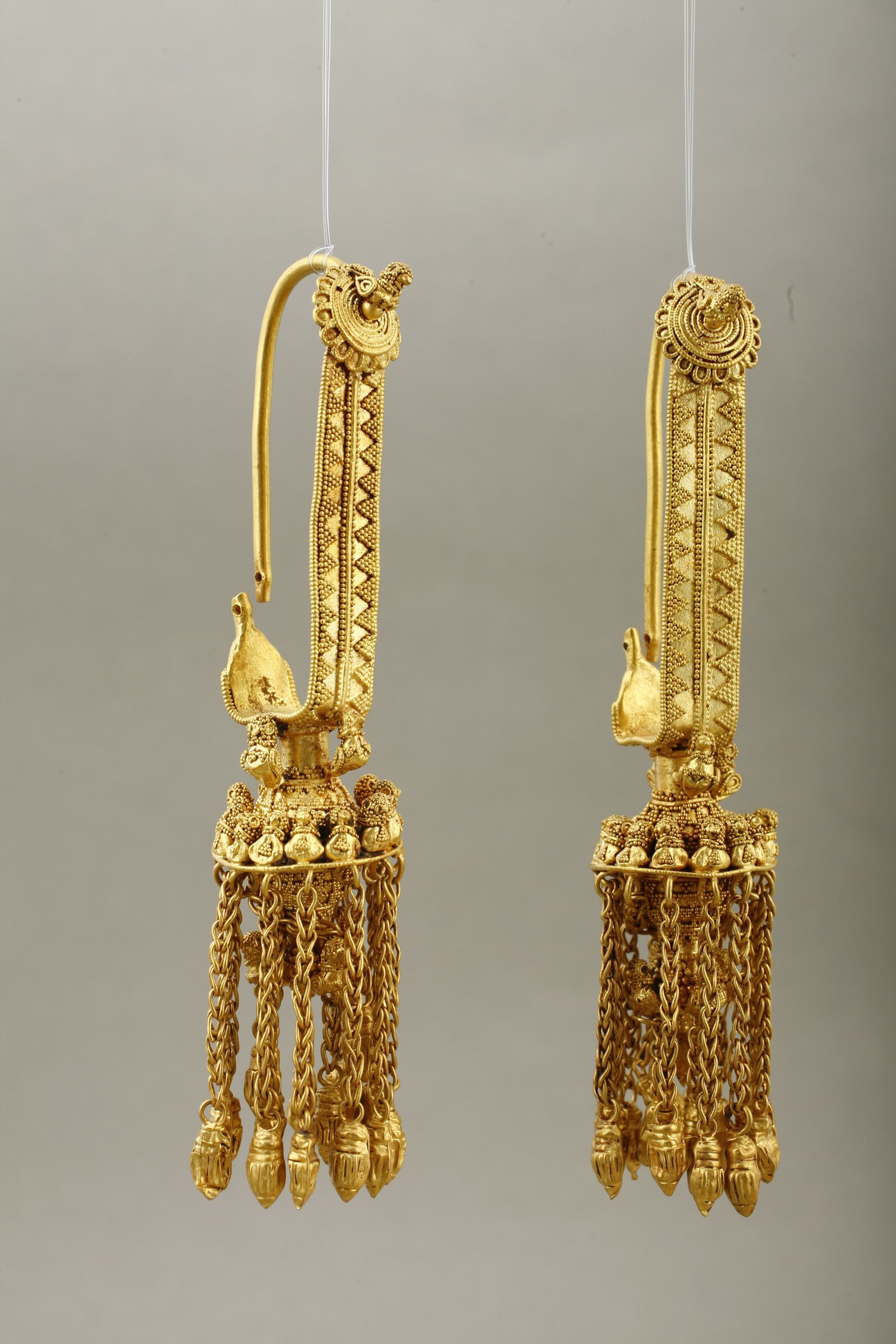
Temple ornaments
Vani, 4th century BCE
Gold, weight: 34.250 g, 34.739 g
Tbilisi, Georgian National Museum, 31-2006:18a-b
While these are not quite the most elaborate temple ornaments found at Vani, they are extremely ornate. Birds constitute the predominant motif. They enliven the rosettes and appear at the junction of the frontal band to the pendant. A whole nest of birds is around the top of the pendant, and yet more hide behind the chains. Granulation and filigree ornament further add to the decoration. (Tomb 22)
Courtesy of the Georgian National Museum.
Image 5 of 9
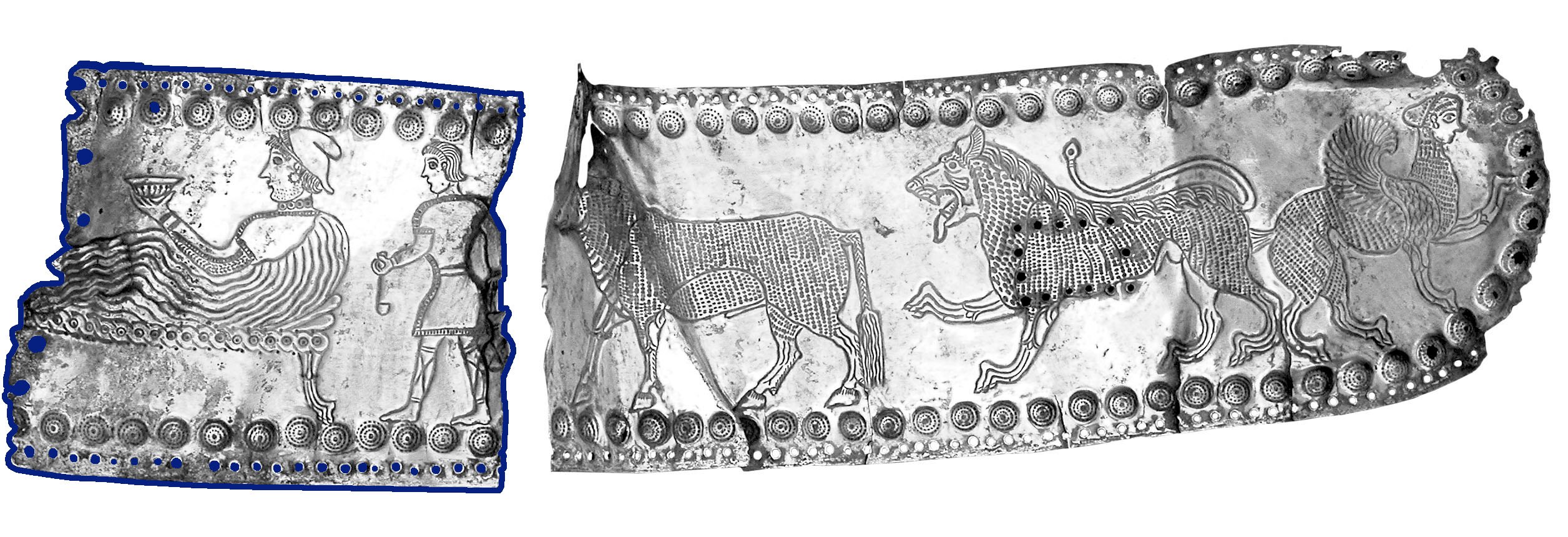
Silver belt
Colchis, 4th century BCE
Silver
Tbilisi, Georgian National Museum, 24-2006:28
This is one of the most remarkable objects found at Vani. A reclining banqueter in the center wears a Persian cap, earrings, and a sleeved tunic beneath a robe. Unlike the idealized individuals in most banqueting scenes, this figure is badly in need of a shave. One servant prepares to ladle wine into the extended cup, and another plays a tune on his pipes. Hounds, lions, and the unusual addition of male sphinxes fill the rest of the scene. The metal would have been sewn to a leather or cloth foundation. (Tomb 24)
Courtesy of the Georgian National Museum.
Image 6 of 9
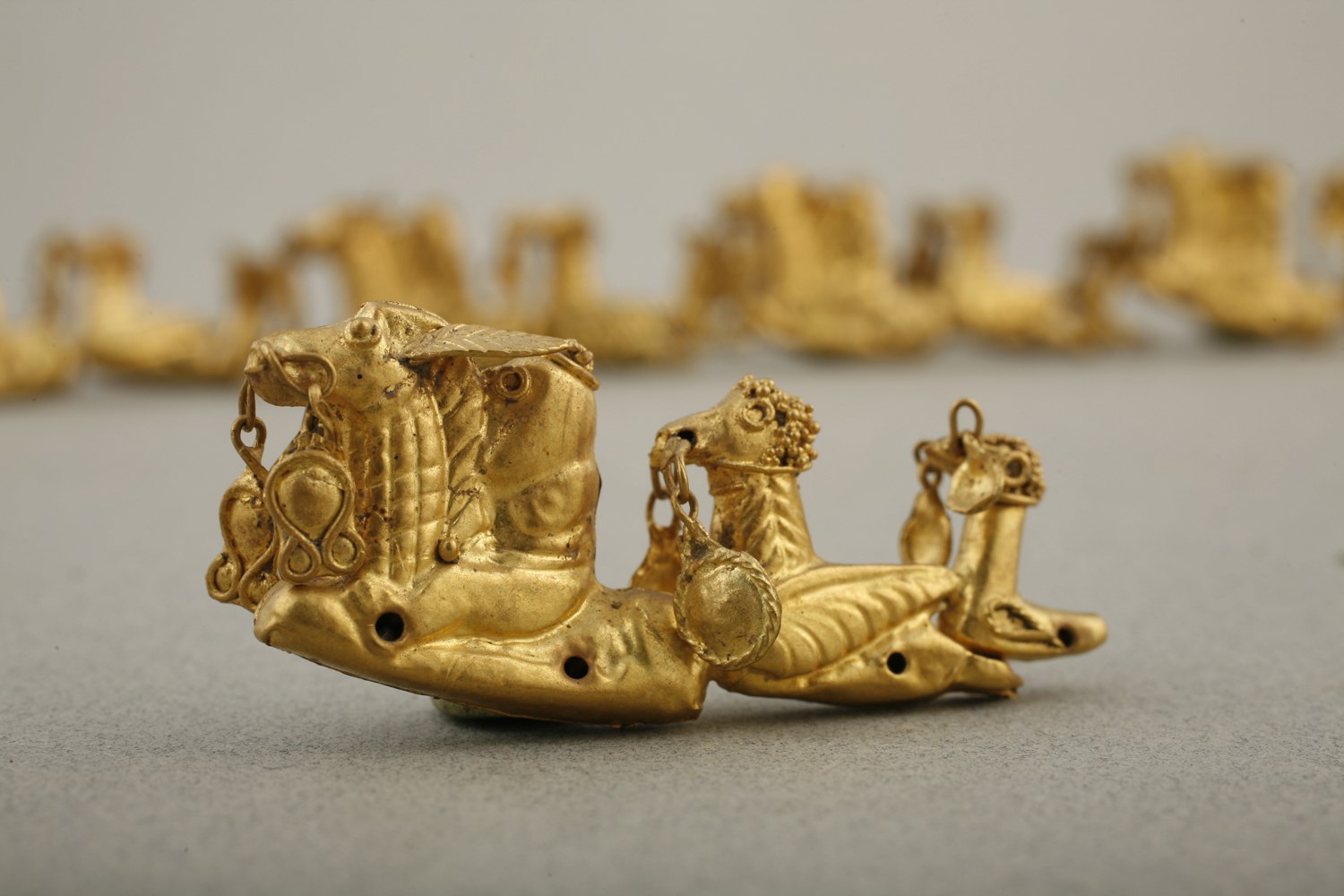
Head ornaments
Vani, 4th century BCE
Gold; total weight: 94.403 g
Tbilisi, Georgian National Museum, 10-975:1
Of the 169 gold objects in this elaborate headdress, the most prominent are the fourteen groups of highly stylized riders accompanied by two birds. The birds each have disks suspended from their beaks, and they were sewn to a supporting fabric by means of the holes along the bottom. Other decorative elements are 59 spherical beads, 3 double beads, 4 triple beads, and 89 tubes. (Tomb 9)
Courtesy of the Georgian National Museum.
Image 7 of 9
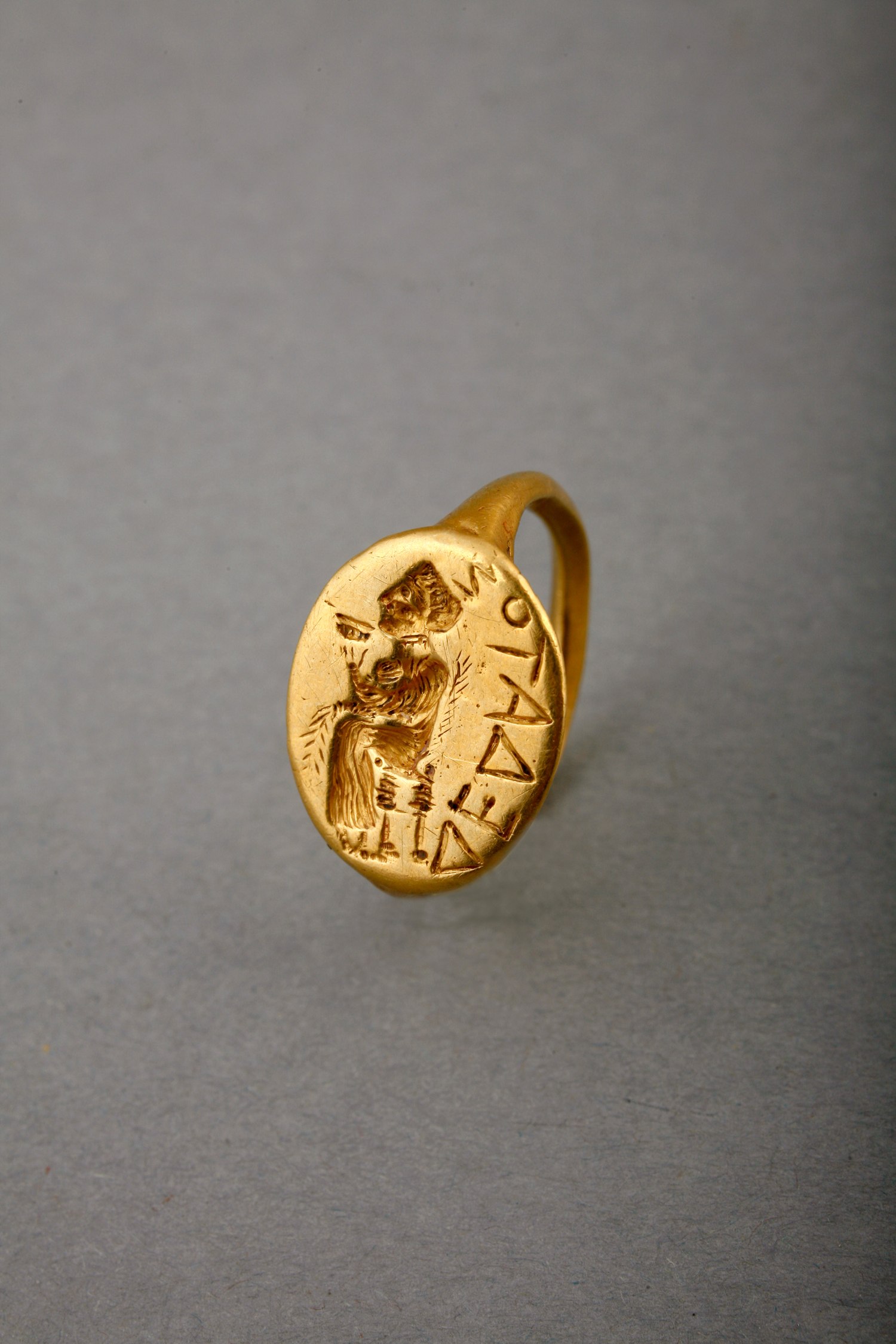
Finger ring
Vani, 4th century BCE
Gold; weight: 10.524 g
Tbilisi, Georgian National Museum, 10-975:4
On this ring a seated woman drinks from a wine cup (phiale) rather like some of the gold and silver ones seen in this exhibition. The Greek inscription may mean that the name of the 'noble warrior' was Dedas. (Tomb 9)
Courtesy of the Georgian National Museum.
Image 8 of 9
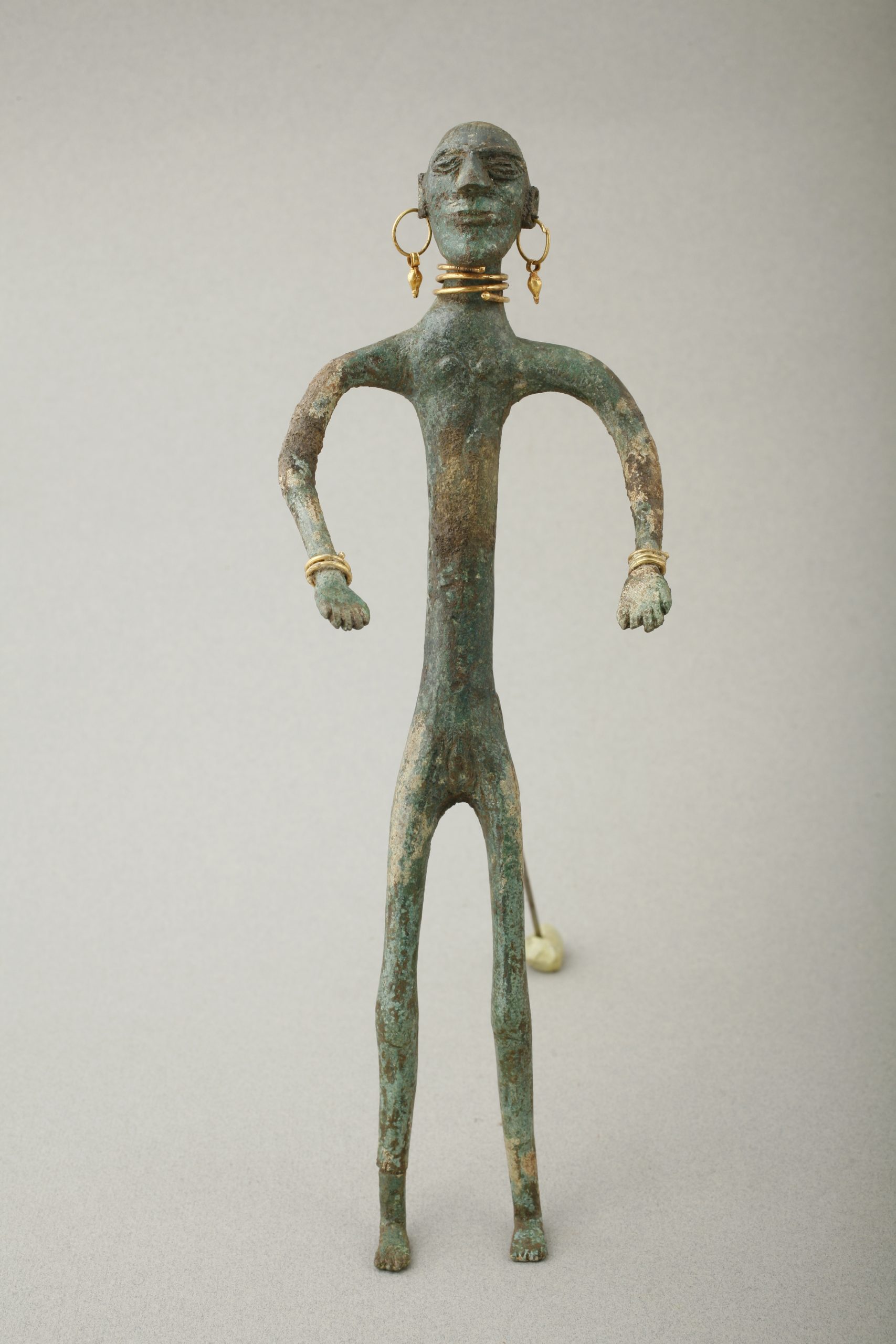
Statuette
Vani, 3rd century BCE
Bronze and gold
Tbilisi, Georgian National Museum, 1-2007/1
In 2002 this stylized figure of a man wearing gold jewelry—a torque, bangles, and earrings—was found sandwiched between tiles in a small rectangular pit cut in the rock just outside a shrine on the upper terrace at Vani. Together with similar iron statuettes, it provides evidence of the little-known religious practices of the ancient Colchians. (3rd Century Sanctuary)
Courtesy of the Georgian National Museum.
Image 9 of 9
A Look at Grave 24
Detail, Head ornaments
Vani, 4th century BCE
Gold; total weight: 94.403 g
Tbilisi, Georgian National Museum, 10-975:1
Of the 169 gold objects in this elaborate headdress, the most prominent are the fourteen groups of highly stylized riders accompanied by two birds. The birds each have disks suspended from their beaks, and they were sewn to a supporting fabric by means of the holes along the bottom. Other decorative elements are 59 spherical beads, 3 double beads, 4 triple beads, and 89 tubes. (Tomb 9) Courtesy of the Georgian National Museum.
- Jump To...

